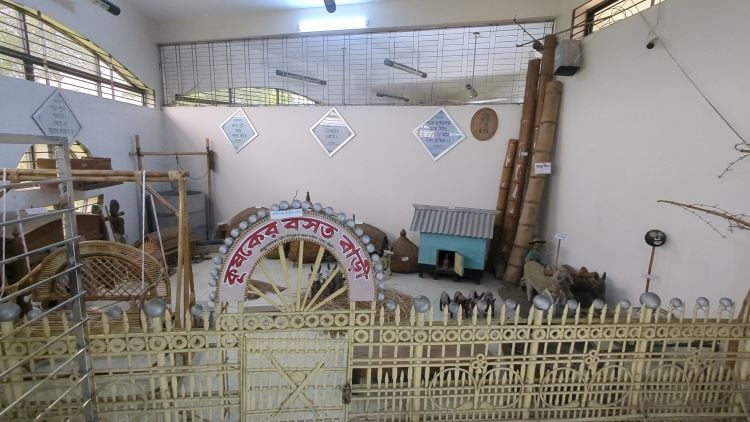News Flash
News Flash

MYMENSINGH, Oct 21, 2025 (BSS) - Bangladesh proudly houses its first-ever Agricultural Museum on the campus of Bangladesh Agricultural University (BAU), Mymensingh.
Established to preserve and showcase the country’s ancient and modern agricultural practices and technologies, the museum aims to deepen national awareness of the rich history and evolution of agriculture in Bangladesh.
Nestled amid the serene green shade of deodar trees opposite the Bangladesh Atomic Research Institute, the museum spans five acres with an octagonal-shaped building designed to provide a unique educational experience.
The project was envisioned by former BAU Vice-Chancellor Professor Dr. Muhammad Hossain, with the foundation stone laid by Professor Md. Mustafizur Rahman on January 24, 2002.
The museum was inaugurated on September 15, 2003, by Vice-Chancellor Professor Dr. Mohammad Amirul Islam, and after a temporary closure, it reopened to the public on June 30, 2007, under Vice-Chancellor Professor Dr. Mosharraf Hossain Mian.
Visitors entering the museum first encounter an aquarium featuring various fish species and ancient agricultural tools. The museum’s circular garden, bathed in natural light, is surrounded by rooms housing an extensive collection of seeds, soil samples, fertilizers, and models of hill farming.
The diverse seed collection includes varieties of rice, wheat, corn, peanuts, linseed, and rare variety Taikar, known for its medicinal properties and culinary uses.
The museum also features displays of traditional agricultural instruments like the Hartaki and Bhilabi, animal skeletons including those of wild buffalo and pythons, and preserved specimens that reflect Bangladesh’s diverse fauna.
Coins from different historical periods illustrate the country’s complex history of colonization.
A unique collection of household items used in rural Bengal, such as the Dheki, Kula, hookahs, and indigenous musical instruments like tablas and violins, is also on display. The evolution of technology is highlighted with exhibits including microcomputers and various electronic agricultural
One of the standout exhibits is a meticulously crafted model of a rural farmer’s homestead, complete with traditional ploughs, cooking utensils, and threshing machines. The museum also displays tribal costumes, fishing equipment, bullock carts, and traditional boats, offering a vivid glimpse into rural Bengali life.
The Agricultural Museum of Bangladesh not only preserves the country’s agricultural heritage but also offers visitors a nostalgic experience of rural Bengal’s natural beauty and traditions. The museum is open daily from 9 am. to 5 pm except Saturdays, welcoming students, researchers, and the general public to explore and appreciate Bangladesh’s agrarian roots.